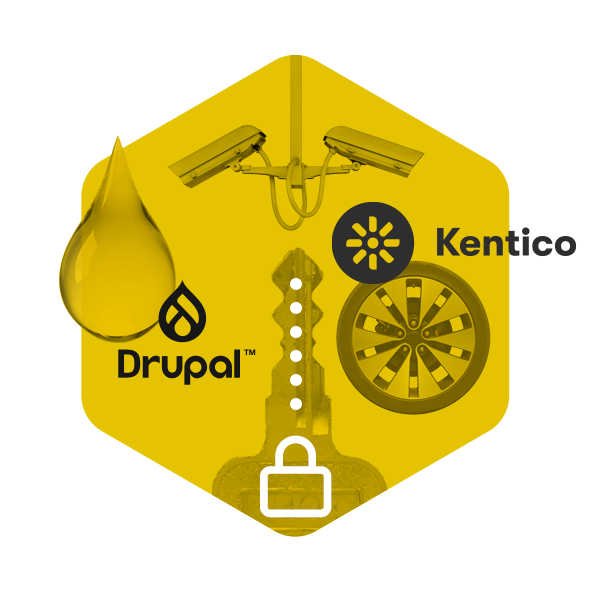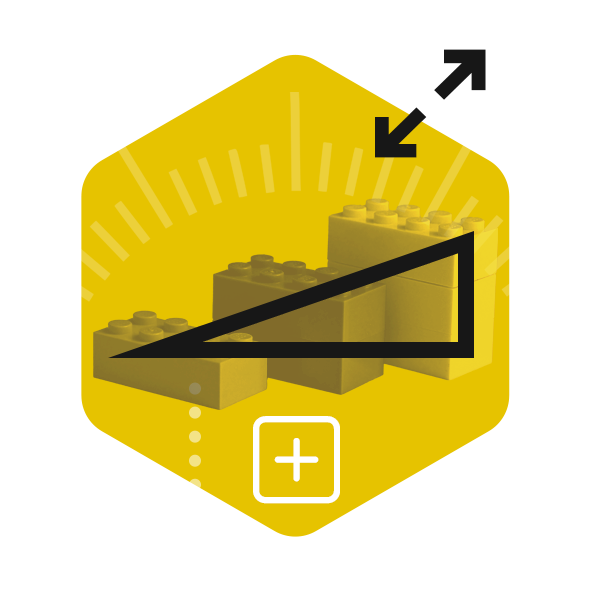Kentico vs Drupal: Which CMS is Right for Your Business
How to Choose the right CMS
Struggling to choose the right CMS for your business? We’ve got you covered with a detailed comparison between Kentico and Drupal.
Choosing your CMS is an important decision, and one that should be taken with careful consideration. In this blog, we'll compare Kentico vs Drupal to help you understand their individual strengths and features. Take a look at our previous comparisons of Umbraco vs Kentico, Umbraco vs Sitecore, Umbraco vs Drupal and Umbraco vs WordPress.

Kentico vs Drupal comparison
Why Choose Kentico?
Kentico is a Drupal alternative and a Digital Experience Platform (DXP) designed for both marketers and developers. It offers a wide range of built-in features for content management, digital marketing, and e-commerce. Its intuitive interface makes it user-friendly for non-technical teams, while still offering flexibility for developers.
Why Choose Drupal?
Drupal is an open-source CMS known for its flexibility and scalability. While it allows for endless customisation, its steeper learning curve makes it more suitable for developers, as customisation and ongoing maintenance typically require more technical expertise.
CMS Comparison: Kentico vs Drupal
| Feature | Kentico | Drupal |
|---|---|---|
| Licensing | Commercial, subscription-based | Open-source, free (with additional development costs) |
| Ease of Use | User-friendly for non-technical teams | Steep learning curve, developer-centric |
| Customisation | Flexible but with built-in tools | Extremely customisable, requires coding |
| Security | Enterprise-level security out of the box | Strong community support but higher maintenance |
| E-commerce Capabilities | Built-in, ready to use | Requires additional modules |
| Support | Paid, professional support | Community support with option for paid support |
Is Kentico easy to learn? Is Drupal easy to learn?
Kentico excels in user-friendliness, making it ideal for both technical and non-technical users. Its intuitive drag-and-drop interface allows marketers to create pages, manage content, and launch campaigns without heavy reliance on developers. Pre-built templates and out-of-the-box features simplify the process, while still offering customisation options for developers.
Drupal offers large amounts of flexibility, but its developer-centric design can pose a challenge for non-technical users. One reviewer on G2 said “the overall tough learning curve it brings to the table is of no use in the modern world”. It requires a deeper understanding of the platform’s architecture, which means basic tasks often need developer support. While this makes it perfect for complex, custom-built websites, it may not be the best fit for teams without strong technical resources.
Security Features: Kentico vs Drupal
Kentico is designed with security front-of-mind, offering a robust set of built-in security features right out of the box. It’s compliant with various international security standards such as the GDPR, which makes it easier for businesses to meet legal requirements without needing complex solutions.
It also provides regular updates and patches to ensure that your website is protected from emerging security threats. With a dedicated support team, businesses can rely on consistent security improvements with less manual intervention.
Drupal is an open-source platform and relies on a large community of developers to address security vulnerabilities. While it has a strong reputation for security, regular updates are essential to maintain protection, requiring more ongoing management.
Kentico CMS pricing compared to Drupal
Kentico’s subscription-based pricing provides predictable costs, offering built-in features like content management, marketing, and e-commerce without third-party tools. This means businesses can choose a plan that fits their current needs and have the flexibility to upgrade as they grow.
Drupal is an open-source CMS, which means the software itself is free to download and use. However, the costs often come in the form of development and ongoing maintenance.
Content Management & E-commerce Capabilities
Kentico offers a unified platform for both content management and e-commerce with integrated marketing tools built-in, it’s easy for businesses to run email marketing campaigns, track customer behaviour, and optimise the user experience. The platform’s e-commerce features are also ready to use out of the box.
Drupal offers flexibility in content management but requires additional modules for features like e-commerce and marketing. Although it’s highly customisable, setting up an e-commerce store involves integrating third-party modules such as Drupal Commerce.
Is Drupal or Kentico Better for Multilingual Websites?
| Kentico's Key Features | Drupal's Key Features |
|---|---|
|
|

Plugins, Modules, Templates, and Layouts: Kentico or Drupal
Kentico’s key factors:
- Access a range of professionally pre-designed templates to jumpstart your site.
- Easily integrate customisable modules for added functionality with minimal configuration.
- Faster setup with less need for custom development.
Drupal’s key factors:
- Access to a wide range of modules for various functionalities.
- More development effort needed to customise and configure modules.
- Greater flexibility comes with added complexity in setup and management.

Extensibility and Scalability: Drupal vs Kentico
Kentico’s key features include:
- Built-in tools for managing increased traffic and content.
- Professional support to assist with scaling and performance optimisation.
- Easier to scale with less need for additional custom development.
Drupal’s key features include:
- Flexibility to scale with custom solutions.
- More developer involvement required for scaling.
- Increased complexity with more modules and customisations.

Performance: Kentico vs Drupal
Kentico’s key benefits include:
- Optimised for speed with built-in caching and performance enhancements.
- Integrated features and streamlined processes contribute to faster performance.
- Built-in optimisations reduce the need for extensive performance tuning.
Drupal’s key benefits include:
- Performance can be impacted by the number of modules and customisations.
- Additional effort required to configure caching and performance settings.
- Performance tuning may require more technical expertise.
Conclusion
In summary, this Kentico vs Drupal article concludes that both have their strengths, but Kentico stands out for its user-friendly interface, customisation options, and ease of use for non-technical users. One reviewer on G2 said “Kentico has helped us improve web experience considerably”. If you're looking for a flexible CMS that caters to both developers and marketers, it's the better choice.
